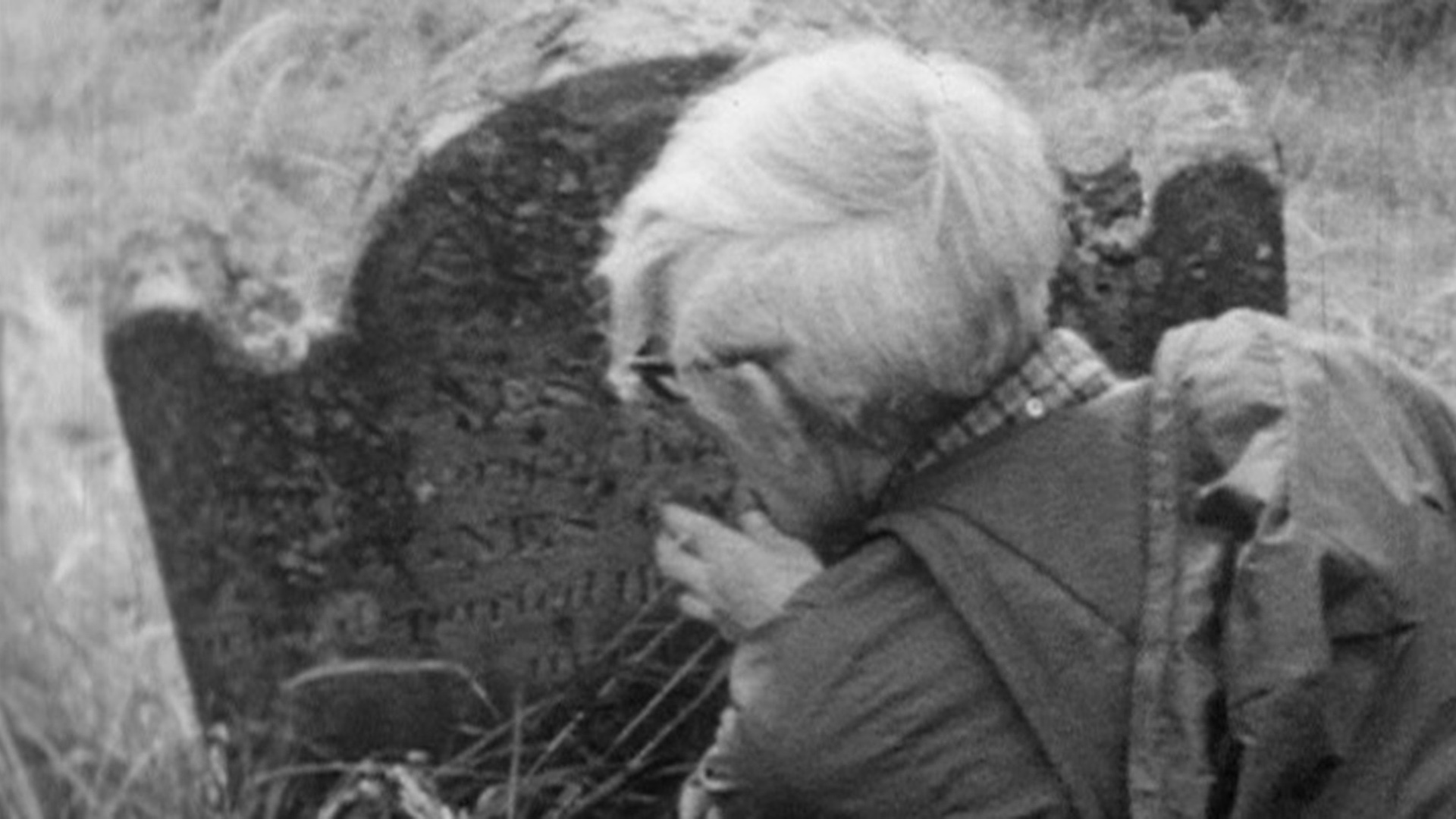My dearest Sirens:
How is everyone’s summer going??? Here in the heart of FOGUST I am feeling pensive and ready for Fall. I spent enough time traveling to places that have actual summer, so I melted my bones a little and I’m gearing up for my real high season: the presidential election and spooky season. Your girl is gonna be busy, so how better to prepare besides nonstop political podcasts and streaming a three hour documentary on the folk horror genre???
Every time I do one of these deep dives, I am reminded of why I love horror movies. Horror gives us catharsis. It’s a way to process traumatic events, personal and historical. And if we’re watching in a theater, it’s even more powerful because we’re doing it together. Movies are one of the most accessible forms of art in our society, which means everyday people are being served by them.
Folk horror movies use time, place, and tradition to reveal horrors about our modern day. Folklore is informally transmitted information, like songs, tales, or rituals. Folk horror involves old or ancient folk stories, enacted in, well, old or ancient locations. It’s often about a confrontation between past beliefs and stories, and the ones that exist now. One of the most famous movies in this genre is The Wicker Man (The English one from 1973, not the Nicholas Cage trash from the 90s’!! Although that was also technically folk horror too!!).
The documentary, Woodlands Dark and Days Bewitched: A History of Folk Horror, talks about a concept called psychogeography. This is honestly complicated and above my philosophical pay grade BUT you can watch an extremely haunting, super fucked example of it in the horror short called The Hungry Grass. And as it just so happens, I saw my own hungry grass a couple of weeks ago in Quebec. LET’S GET META, YOU GUYS.
First, go watch this. It’s free and it’s five minutes long and you have earned yourself a little film treat. The movie is about an American who travels to Ireland to investigate ancestors who died in the Great Famine. He goes to an old cemetery that is overgrown with grass and weeds, and as he sits and sketches the tombstones, the HUNGRY GRASS wakes up and consumes him whole. It’s shot in black and white and made to look very old, even though it was made in the 1980’s. It’s SO HAUNTING and SO GOOD.
As it happens—or not, because I live my life like one long themed adventure—I recently visited Grosse Île, an island in the St. Lawrence River in Quebec that served as a immigration station for Irish refugees during the Famine. The majority came through in 1847—“Black 47”—and a shocking number of them died and were buried on this island. My ancestors arrived through here, and I wanted to stand in their shoes; to immerse myself in the psychogeography of our journey to America. Do I seem psychogeographed???
The story of Black 47 on Grosse Île is absolutely haunting. During the Famine, thousands of poor, staving tenant farmers were given a choice: die of hunger, or give up their lease in exchange for transport to the Americas. Canada was part of Great Britain then, and there were no immigration shipping restrictions. Ships coming to America had restrictions on passenger numbers and living conditions; ships to Canada did not. Landlords sought the lowest price to get these people off of their land, and the lowest price was on hastily retrofitted lumber ships to Quebec. They were called coffin ships.
Coffin ships were packed tight with malnourished, sick people. They were leaky, cold, and uncomfortable, because they were not designed to transport human beings. Diseases spread rapidly, especially typhus. The death rate on some of these ships was 30%. As passengers died, they were buried at sea – until they reached the St. Lawrence. Regulations forbid throwing bodies overboard in fresh water so close to shore, so they were stored aboard. With hundreds of ships arriving, they backed up in the harbor. Typhus spread like wildfire.
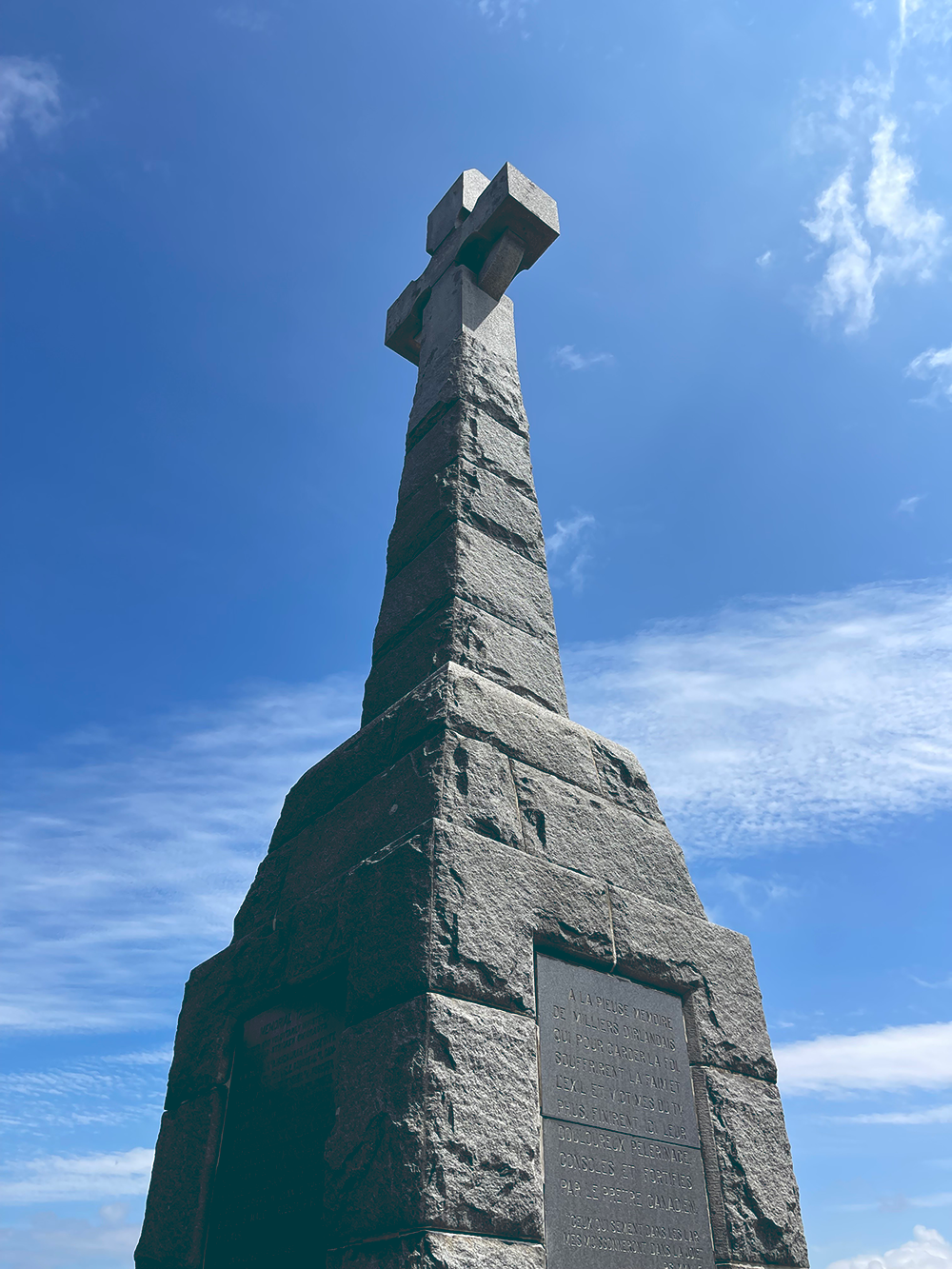
Irish Memorial Cross
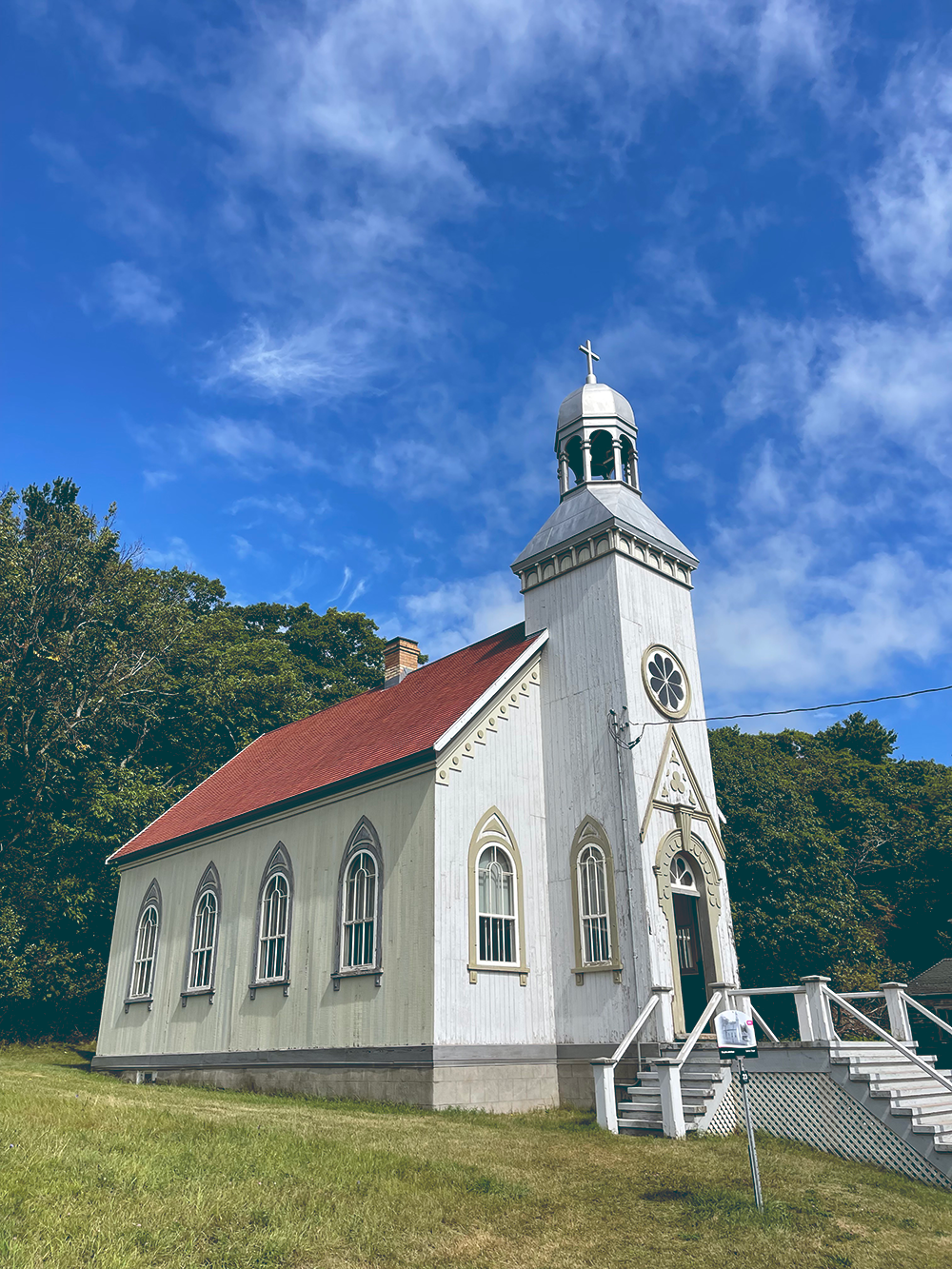
Church exterior
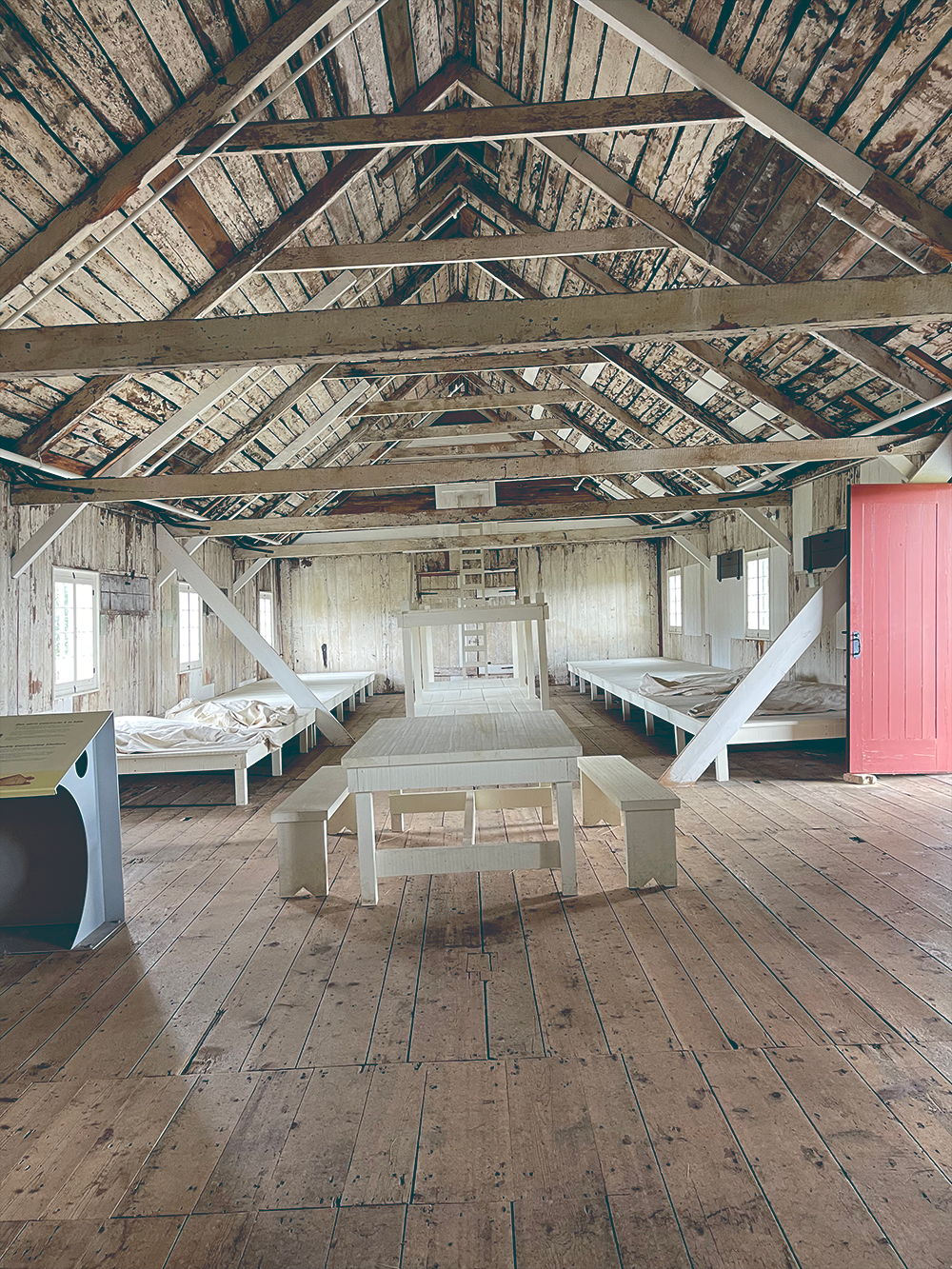
A quarantine shed for typhus patients
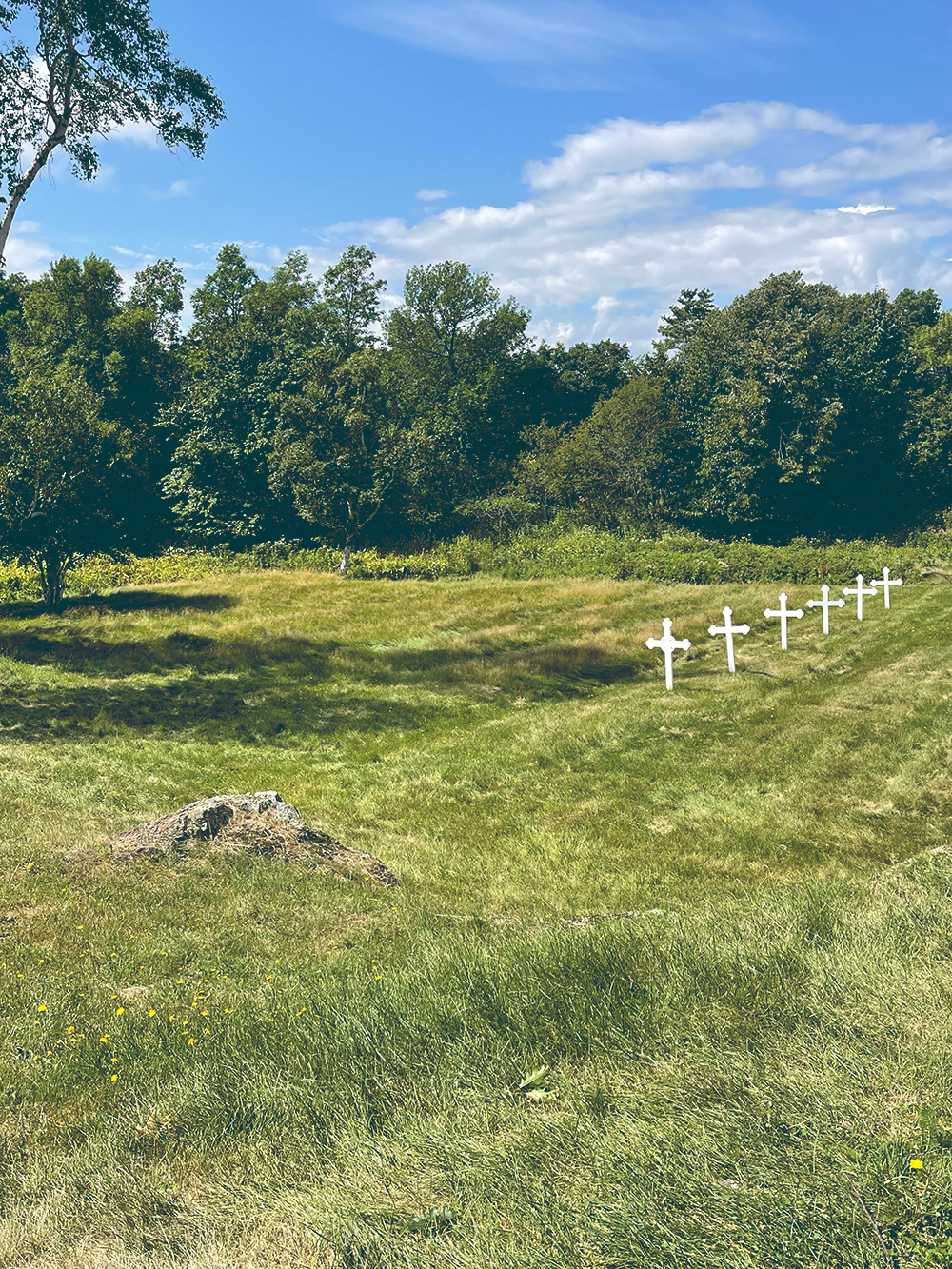
Mass grave with 5,000 people - symbolized by 47 crosses for the year they died
The doctor in charge of the Grosse Île immigration station said he could smell disaster coming – it could have been a metaphor, or it could have been that the decomposition and poor conditions were actually carried downwind. All told, over 5,000 Irish emigrants died at Grosse Île. The Canadian government, and the medical standards of the day, were unprepared for the onslaught of poverty and disease. The dead were buried in a mass grave on the island.
So what does it mean for us, the descendants of those who made it through, to step onto that island? What does it mean to walk on the grass that covers the ones who didn’t? I was frankly worried that I would be overwhelmed by it, that the grass would swallow me, too. To hear of the magnitude of suffering and grief, and know that it’s encoded in your DNA – that’s what the hungry grass is all about. There’s a lot of research to show that trauma like this affects the expression of genes down the line, which means that 30% of Americans are carrying this around in their cells. Aka, the grass got them.
Anyway, there was no chance for me to be overwhelmed by historical magnitude because this was a FAMILY vacation. I spent three days reading facts off to my teenagers and reminding them of WHERE THEY CAME FROM while they rolled their eyes and turned their music up. Every time I tried to use my (admittedly janky) French, they pretended like they didn’t know me. But there was one time I myself pretended absolute ignorance – when the squirrely little captain of the Grosse Isle Ferry followed me around trying to flirt with me. Sir, first of all I am fifty years old and traveling with what is clearly my family. Second, I’m trying to have a moment! With the ancestors! Step over here onto this grass, sil vous plait.
Xo,
Court

